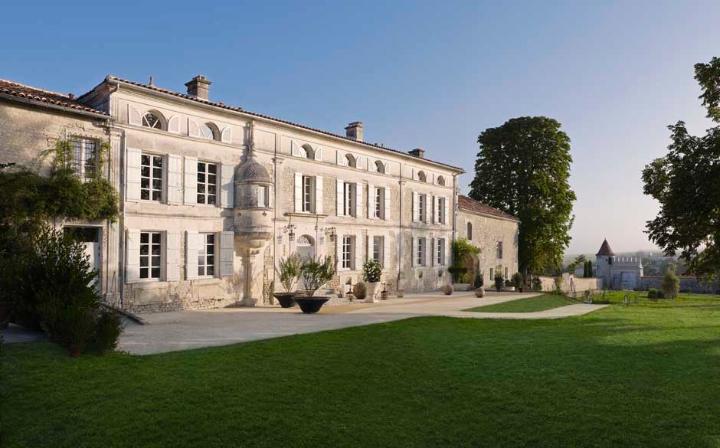When times get tough, creativity shines. Cocoon takes a look at what brands such as Grey Goose, John Lobb, and Gucci are doing to grow their business amid a difficult sales environment.

When times get tough, creativity shines. Cocoon takes a look at what brands such as Grey Goose, John Lobb, and Gucci are doing to grow their business amid a difficult sales environment.
When times get tough, creativity shines. Cocoon takes a look at what brands such as Grey Goose, John Lobb, and Gucci are doing to grow their business amid a difficult sales environment.
While a luxury label was once enough to entice customers, it is now more challenging than ever to capture their attention. As pressure increases to drive sales amid uncertain times, marketers have made a variety of efforts to engage with shoppers.
From handing over creative control to consumers, to focusing on experiences, to finding fresh ways to showcase craftsmanship, brands have innovated to stay ahead of the game.
So let’s take a look at how luxury brands have been pushing the boundaries over the past month.
Experience is Everything
The luxury landscape has shifted. Just 15 years ago, luxury brands were defined based largely on their heritage. But perceptions and desires have changed. Consumers want to explore and discover a brand for themselves, they want to be involved and become part of the brand story. And above all, they want an experience.
“ Guests staying at Le Logis are fully immersed into the Grey Goose brand ”
Grey Goose is doing just that, by launching its luxury weekend breaks. While the Cognac region of France may be famous for its wineries, it also plays home to Grey Goose – which was produced there just 19 years ago. The brand’s spiritual home, an impressive 17th-century chateau called Le Logis, is now opening its doors to wealthy travellers looking for a unique experience.
Guests staying at Le Logis are fully immersed into the Grey Goose brand, and are invited to an induction to the vodka’s manufacturing process, or a bread making course which uses the flour from production. Within the gardens, vegetable patches provide fresh produce for supper and an outdoor pool provides an idyllic location to sip cocktails in the sunshine.
The demand for this kind of experience is increasing; which no doubt has resulted in the luxury travel sector growing by a whopping 48% in the last five years.

Credit image Telegraph.co.uk
Personalised Luxury
Personalisation and luxury go hand-in-hand. More than ever, people want products that showcase their individuality. Given that 64% of millennials are likely to stray from a brand that is no longer unique, personalisation will become increasingly key to luxury loyalty, according to LIM College. The results speak for themselves.
Burberry ’s personalisation initiative for its scarf bar has helped scarves outperform other accessories since September 2015.
Gucci is also handing over creative control to consumers, with the launch of its customisable handbags. After all, handbags are one of the most noticeable accessories and a true statement of individual style. The offering allows shoppers to co-design a Gucci Dionysus bag, worth $2,500. Shoppers have a choice of four leathers – ostrich, crocodile, python or ‘moon’ leather – in a range of 18 colours and linings. If that’s not enough, customers can choose from a selection of plant or animal embroideries and trims.

Craftsmanship Still Matters
Craftsmanship, like personalisation, remains a key component in luxury. Consumers want to understand the provenance and rich narrative behind their purchases – they want to know what goes into their hand-stitched leather Hermès bag, or meticulously handcrafted piece of Boodles jewellery. As a result, we’re seeing a number of brands touting their luxury credentials.
British footwear maker John Lobb is doing this by highlighting the intimate relationship between a craftsman and his tools, through a series of ongoing films. The films help to depict that craftsmanship is very unique, and even the slightest detail and the most indiscernible gesture can make a difference.

Likewise, London department store Fortnum & Mason is celebrating British craft through an in-store exhibition in its menswear department. The project reflects Fortnum’s values, as it sources the majority of its menswear edit from British based brands.
The retailer has collaborated with the ‘With Love Project’ to help launch its book documenting 40 artisans from diverse fields – such as furniture makers and tailors. The With Love Project aims to showcase creative people who are driven to make things – from shirts to backpacks, to shoes and workman’s tools – by a sense of passion and purpose.
Fortnum & Mason celebrated the book launch earlier this month by hosting an event at its flagship Piccadilly store, hand-picking a selection of brands from the With Love Project to be showcased.
Sharing stories like these enables consumers to really connect with the products. It’s also an effective way to entice shoppers in-store, as it takes the retail environment beyond a simple point of sale.

And that’s the end goal: to engage with consumers in unique and interesting ways. Whether that’s through co-creation, customisation or craftsmanship, the opportunities are huge. Luxury brands that tap into these trends are likely to reap the rewards.
To further investigate luxury trends on Luxury Society, we invite your to explore these recent related articles:
– The State of the Luxury Watch Industry in 2016
– The Luxury Travel Trends of Affluent Asian Travelers
– The Tech World is Buying Art. Online, Of Course.










